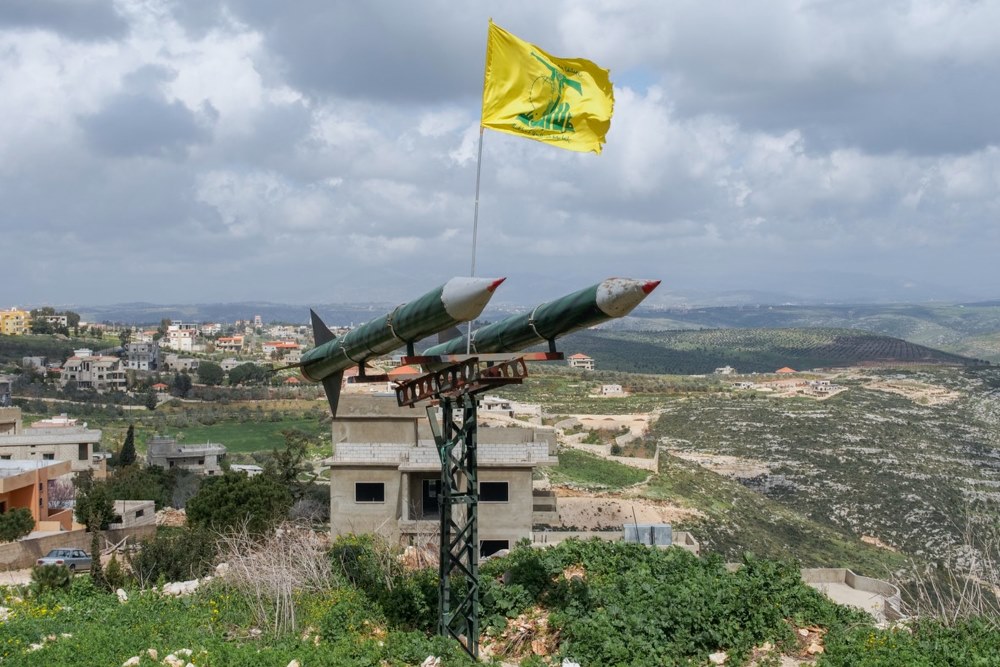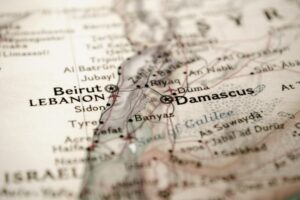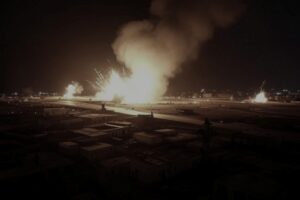
Before the eruption of war in October 2023, Hezbollah stood as the key piece in Iran’s regional network of terror armies.
It was widely regarded as the world’s most powerful non-state military force, with a vast arsenal of rockets, missiles, UAVs, and an extensive network of tunnels and fortified outposts along Israel’s northern border.
Hezbollah’s elite Radwan unit was constantly drilling for cross-border raids, prepared to launch operations into Israeli territory at short notice.
But by the end of 2024, the organization was shattered.
Hezbollah’s black September
After the October 7 attacks ignited a broader regional conflict, tensions along the Israel–Lebanon border intensified. For months, Hezbollah exchanged fire with Israel in a relatively restrained clash.
But in September 2024, the IDF and Mossad dramatically escalated their campaign, transforming the northern front into a full-scale theater of war.
Israel unleashed a devastating combination of tech and intel superiority. Thousands of Hezbollah operatives were eliminated in targeted operations, many via rigged communications devices and precision airstrikes that decimated Hezbollah’s infrastructure and command networks.
Most of the organization’s senior leadership, including figures long considered untouchable in Beirut, were systematically eliminated in a series of covert and overt operations.
Strategic collapse
By the time a ceasefire was brokered in November 2024, Hezbollah had suffered catastrophic losses:
Over 5,000 fighters killed, including many from its elite Radwan force.
Thousands more wounded, leaving the organization critically short on experienced manpower.
Its senior leadership wiped out, the result of a relentless Israeli campaign that combined signals intelligence, aerial surveillance, and human assets on the ground.
Rocket and missile stockpiles severely depleted, either destroyed in strikes or seized by IDF ground forces.
Its fortified border zone destroyed, with Israeli ground troops dismantling bunkers, tunnels, and weapons caches in sweeping operations along the frontier.
What had once been an entrenched and menacing presence along Israel’s northern border was now reduced to rubble.
New strategic landscape
In the wake of its defeat, Hezbollah is attempting to regroup, but faces tremendous challenges:
Almost daily Israeli airstrikes continue to target operatives and military infrastructure across southern Lebanon.
Loss of strategic depth in Syria, after the Assad regime collapsed and Hezbollah’s cross-border supply routes and staging areas largely disappeared.
Financial strain is tightening, with Iran’s support curtailed and local fundraising insufficient to rebuild.
Lebanese political pressure is mounting, with parts of the government openly calling for the dismantling of Hezbollah’s remaining military capabilities in order to stabilize the country and attract reconstruction aid.
Even if Hezbollah retains a degree of influence in Lebanon, the reality on the ground is stark: it has lost the strategic deterrence it once held over Israel. Its mystique of invincibility has been broken. The threat of a northern war no longer carries the weight it did before 2024.
Hezbollah’s defeat marks a profound shift in the balance of power in the region. For Israel, it represents the successful neutralization of a persistent threat on its northern frontier. For Iran, it signals a major blow to its regional ambitions and the disintegration of one of its most powerful assets.
The war may be over for now, but the consequences are only beginning to unfold.


